A Hiking Artist’s Travelogue Is an Intimate Look at Life on the Trail
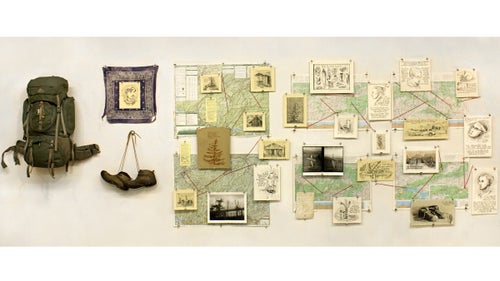
When started hiking parts of the Appalachian Trail six summers ago at age 18, he carried a sketchpad, intending to use it as both diary and camera. But when he brought the weathered notebook back to New York’s School of Visual Arts—full of dirty faces and forgotten detours—his professors urged him to return to the trail.
Now pursuing a Master of Fine Arts at the New York Academy of Art, the 24-year-old from Nashville took their advice, continuing to section-hike and sketch over the past four summers. Rue has expanded the project into a mixed-media art installation, using his sketches as inspiration for sculptures, prints, and woodcuts he made in his New York studio. And though he considers it a work-in-progress, Rue started showing Appalachian Travelogue around the city, dragging along his dirty boots and backpack. Parts of the project have been shown at Sotheby’s art gallery in New York and other galleries as far away as Rome, in addition to having a solo show in New York City’s VCS Gallery.
“What I’m trying to do is capture the culture and landscape of the trail by drawing from life,” says Rue, who finished the trail in Maine last summer but has started to section-hike it in reverse. “I hope that it transcends its subject matter to become more about how we relate to nature in contemporary life.”
Photo: Appalachian Travelogue, Thesis Installation, Mixed Media
This piece was the first iteration of Appalachian Travelogue. Rue created it as his undergraduate thesis installation in 2014, focusing mostly on sections of the trail closest to his home in Tennessee. Since then, he’s added sketches from the northern end, especially Maine and New Hampshire, his favorite states to hike. “I wanted to create something that represents every section of the entire trail,” he says. “So that, as you moved through it, it would almost be like traveling from Georgia to Maine.”
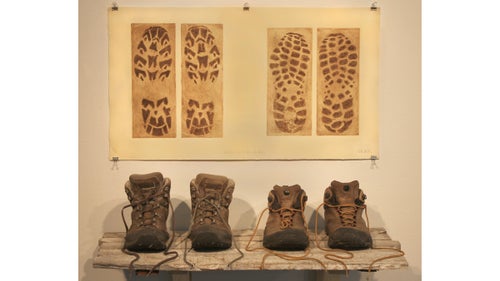
To create these prints of his Merrell and Scarpa boots, Rue stepped on a copper plate covered in an acid-resistant coating while wearing his hiking boots. He then dipped the plate in an acid bath, which ate away at everything around the boot imprint. After inking the engraved plate and running it through a press, Rue displayed these etchings with the actual boots, each of which has covered over 1,000 miles. “In my most recent show I had my trekking poles and my sleeping bag,” he says. “Nothing has been retired yet except the boots, which have holes and smell bad.”
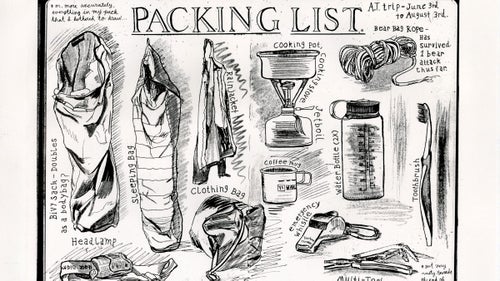
This lithograph, made using a scan from his first sketchbook, shows Rue’s packing list from an early trip on the AT. Creating a lithograph involves a complicated chemical process that results in an ink impression of the original drawing.
The note in the right-hand corner refers to one of his first experiences on the trail, when a bear stole his foot bag but left the rope holding it in place. Along with camping gear, Rue also carries a nine-by-12-inch spiral bound notebook, ink pens, graphite pencils, watercolors, and chalk.
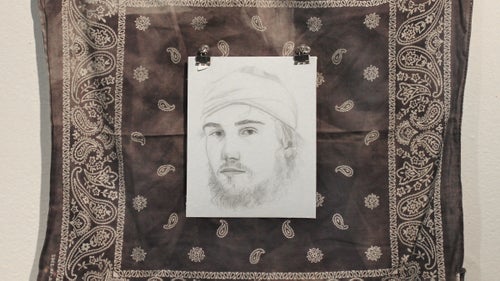
Rue, pictured in this self-portrait, says he usually starts his hikes—which last from two weeks to two months—alone but ends up joining other groups. “I like to hop in with other groups of hikers and stay with them for a week at a time,” he says. “That way I could get to know them, make sketches of them, and get all of their stories.”
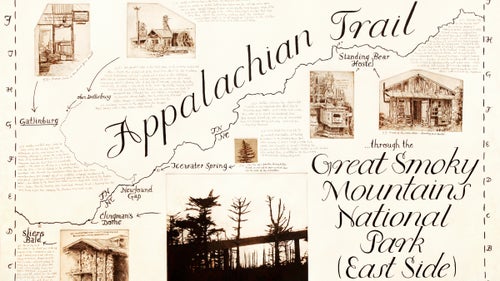
Rue created this map, for the AT section that follow the Tennessee-North Carolina border, by turning drawings from his sketchbooks into etching plates that he printed along the state line. “I use the sketches as reference materials that I update into something more substantial when I come back to my studio,” Rue says. “That’s where I make my more elaborate pieces—woodcut prints, lithographs, large scale charcoal drawings.”
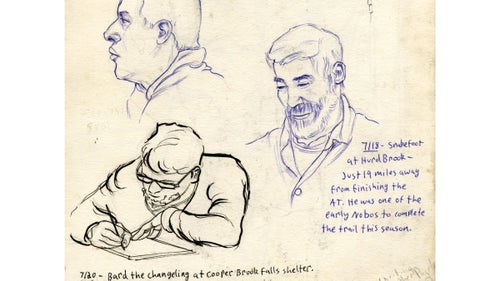
Rue likes to wake up early to make sketches of fellow hikers while they’re eating breakfast or making coffee. Some are nervous about this idea of playing model, but Rue says most are excited and ask for an emailed a copy of the sketch. “Hikers are very active people and don’t stay still for very long,” he says. “I like to wake up and do little portraits of them while they’re at their most relaxed.”
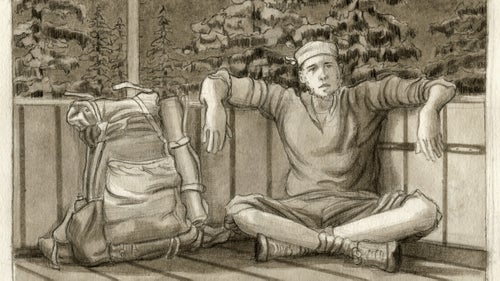
Rue spent most of this past summer hiking with Youngblood, an 18-year-old Californian. After staying in a hostel in Maine, the two bummed a ride back to the trail in a pickup truck. Rue couldn’t sketch during the bumpy ride so he had Youngblood pose outside a shelter later that night and filled in the truck details by memory. “As much as I think drawing from life is important, I’ve recently started to do things from my memory because I think that’s a form of truth as well,” says Rue. “It’s not necessarily showing things as they were factually, but how they impressed us.”
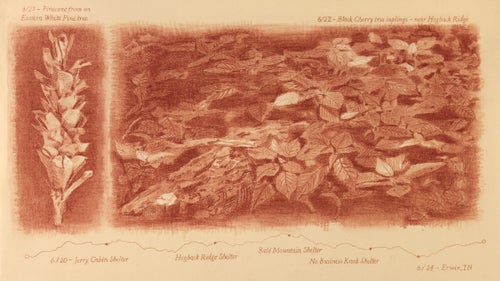
Using red chalk, Rue sketched two of the most well-known examples of trail flora in Tennessee—the Eastern White Pine and Black Cherry tree. Below that, he mapped the elevation profiles of the shelters along Tennessee’s section of the AT.
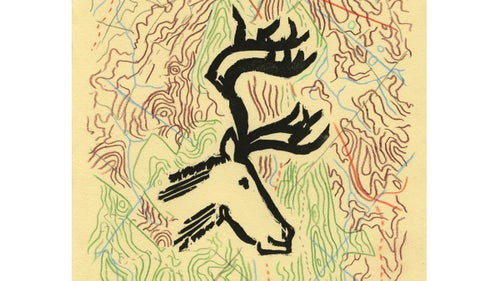
On the trail, Rue goes by Caribou, a nickname given by an old cross country coach who recognized that, while he couldn’t run fast, he could run far. Seeing as Caribou migrate the furthest of any land mammal—and the Appalachian Trail is 2,190 miles—the name stuck. Rue signed trail logs with a drawing of a caribou and later used it as an inspiration for this woodblock print.
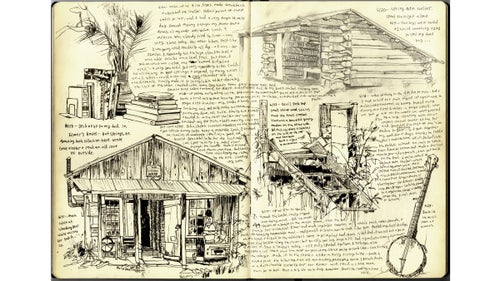
Rue often uses his sketchbook as both camera and diary, like this page from the Smoky Mountains portion of the trail. “I really like when my sketchbooks get dirty and smudged and covered in footprints,” he says. “I like that grittiness because I think it captures the spirit of hiking.”